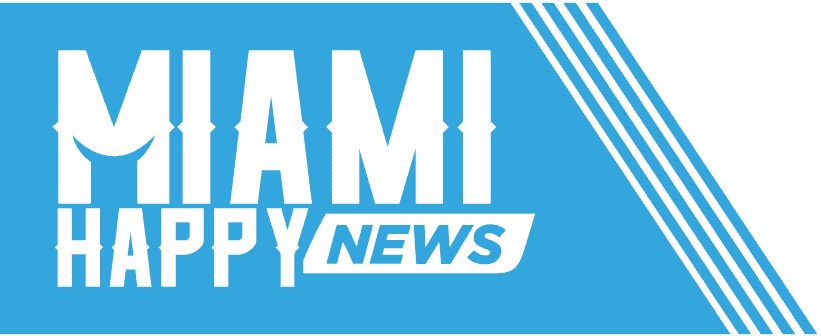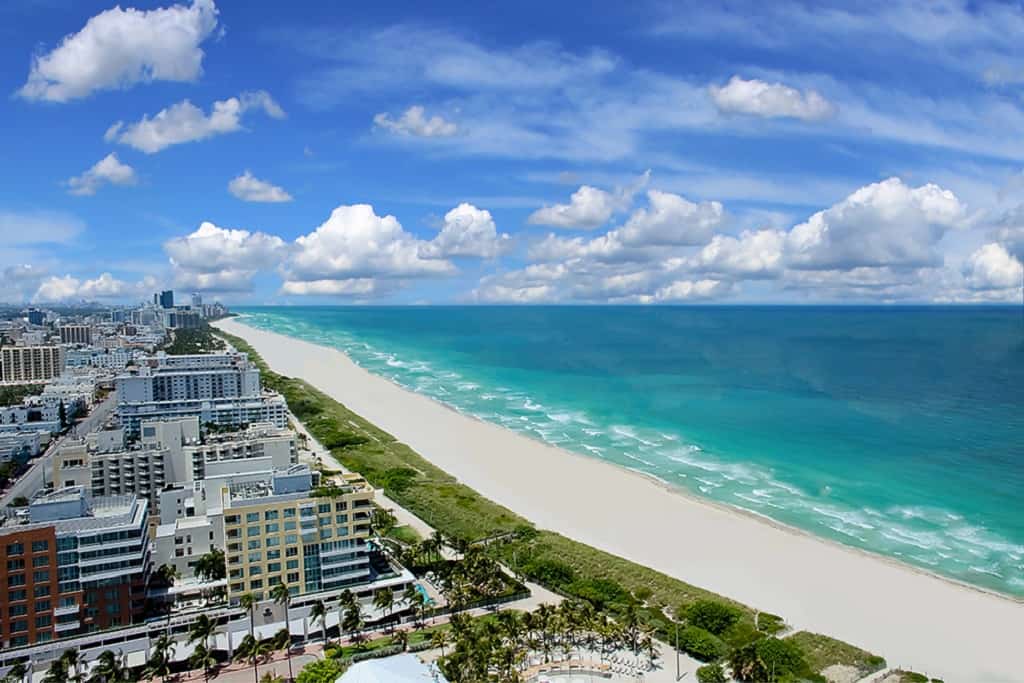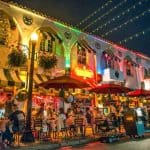It is the county seat of Miami-Dade and was founded on July 28, 1896.
Its metropolitan area encompasses more than 5.4 million inhabitants, making it the seventh largest city in the United States.
The United Nations has calculated that Miami became the ninth largest metropolitan area in the country, behind Los Angeles, New York, Chicago, Washington D.C., Philadelphia, Boston, San Francisco and Dallas.
It is considered a global city of importance in business, media, entertainment, arts and international trade.
It is the headquarters of many central offices of companies and banks.
It is also an international center of popular entertainment in television, music, fashion, cinema and performing arts.
In addition, the city has the largest concentration of international banks in the United States.
The Port of Miami is considered the one that looks up for the largest volume of cruise ships in the world and is also the headquarters of several cruise line companies.
In 2008 it was awarded by Forbes magazine with the title of “Cleanest City in the United States” for its work in terms of air quality, large green spaces, clean drinking water, streets and various recycling programs.
In that same year, Miami ranked as the third richest US city and the twenty-second in the world, according to a study by UBS AG.
Origin of the name Miami
The name Miami comes from Laguna de Mayaimi. A name which Hernando Escalante de Fontaneda named Lake Okeechobee in the year 1575.
The name would evolve to Maymi and finally the Spanish town of Tequesta would be named after this name.
The place name probably comes from the Spanishization from the calusa or tequesta and means Big Water or Fresh Water.
Another version says that the city gets its name from the Miamian Indians, who resided around Lake Okeechobee and along the river which they gave their name, and who inhabited the area in the past.
Alongside the mouth of the Miami River, important settlements of the Tequesta Caribes who were partiality established.
Before its foundation, the area known today as Bahía Vizcaína was inhabited by the indigenous Tequesta, Mayaimi and occasionally Calusa ethnic groups.
When Juan Ponce de León arrived in the area that currently corresponds to Miami, in search of the “fountain of youth”, he found a dazzling variety of indigenous people.
In 1567, with Pedro Menéndez de Avilés, the Spanish presence in the region was consolidated on a settlement of the Tequestas.
The Spaniards created the mission of Teguesta work from Jesuit Francisco Villareal, which was located at the mouth of the Miami River.
However, after the successive wars, the Spaniards abandoned the territory.
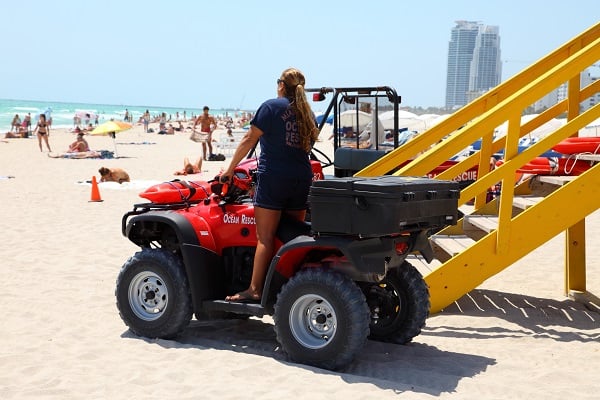
A bit of history about Miami
In 1891 a wealthy widow named Julia Tuttle moved to Florida and purchased 640 acres of land on the north bank of the Miami River.
Later, Tuttle convinced the wealthy railroad builder Henry Flagler to extend the railroad line to Miami in order to build a luxury hotel and build a new town.
The result was the founding of the city, in 1896.
Urban growth seemed unstoppable around the 1920s, when real estate prices in some cases quadrupled in a matter of five years.
Ground speculation was held back by the destructive hurricane of 1926, which in addition, killed more than 200 people, and left at least 25,000 people homeless and damage that caused several million dollars.
This led Miami to a deep economic depression three years earlier than the rest of the country.
However, it did not stay bad for long and managed to get out of the depression of 1929 before the rest of the nation.
At that time, Pan American Airways started the modern era of aviation with the Flying Clippers of Miami Dinner Key.
Even then, Pan American Airways advertised from Miami as Gateway to the Americans.
Today, the Pan American Airways terminal is where the City Hall is located.
During The Second World War, the city was an important center of training and concentration of troops, especially in Miami Beach.
Many men and women who trained during the war returned to South Florida, generating a new period of great growth.
When the Cuban Revolution took power in 1959, the history of Miami took an unexpected turn: in just one decade, more than 400,000 Cubans arrived in Miami.
The first exodus of Cubans was mostly of middle and upper-class families during the presidency of Fulgencio Batista that was supported by the United States and that after the Cuban Revolution lost all their privileges.
This caused the education system to make an excessive effort to train thousands of Spanish-speaking children.
The hundreds of thousands of Cubans that settled throughout the county but especially in the Riverside area, which was renamed later as Little Havana, an area which Latinos could take their businesses throughout the city and their daily lives speaking in Spanish only.
1980 was an intense year for the city due to the riots known as Liberty City Riots, which occurred due to a fact of authority abuse by police officers towards an African-American named Arthur McDuffie.
In that year also came the second wave of immigrants, Exodus del Mariel, in which 150,000 Cubans arrived in Miami.
This group differed from the first wave of immigrants because they were (mostly) poor, of low cultural level and it is estimated that 25,000 had a criminal record in Cuba.
Also, in 1980 the city witnessed an increase in Haitian immigrants, who settled in an area that later became known as Little Haiti.
All this migratory flow that entered Miami increased violence and crime, taking the homicide rate to historical levels during the 80s.
This period of violence is known as the cocaine war (The Cocaine War), where bands of Colombians were facing bands of Cubans (named at that time as the Cocaine Cowboys) who worked for high-level drug traffickers.
Meanwhile, political conflicts in Central and South America generated waves of migration from many other countries.
In the 2000 census, 65.8% of the inhabitants of the city were classified as “Hispanic”, reaching 90.8% in areas such as Little Havana.
At the beginning of the 21st century the view began to change favorably for Miami.
Nowadays, it is an open city to international trade, especially with Latin America.
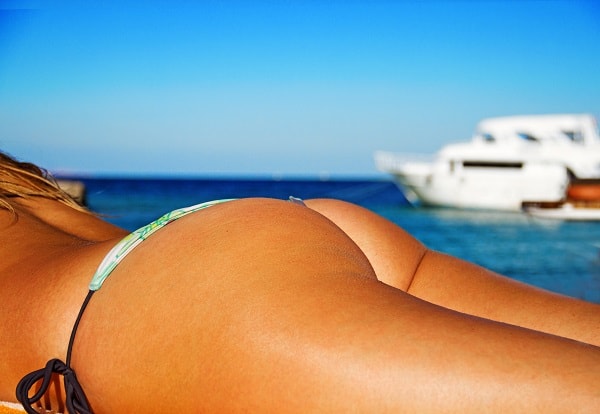
Geography
In terms of area, Miami is one of the smallest large cities in the United States. According to the country’s Census Bureau, the city covers a total area of 143.15 km².In fact, 92.68 km² are land and 50.73 km² are water.
That means that Miami hosts more than 400,000 people in 91 km², making it one of the most densely populated cities in the country, along with New York City, San Francisco, and Chicago, and others.
The city proper is home to less than 1 in 13 South Florida residents. In addition, 52% of the population of Miami-Dade County does not live in any incorporated city.
Miami is the only city in the United States bordered by two national parks, the Everglades National Park to the west and the Vizcaíno National Park to the east.
Miami and its suburbs are located on a broad stretch of land extending from Florida Bay north of Lake Okeechobee.
The elevation of the area never rises above 12 meters and the averages are around 2 meters above sea level in most neighborhoods, especially near the coast.
The greatest ripples are found along the coast of Miami Rock Ridge, whose substrate is the base of most of the eastern region of the Miami metropolitan region.
The main part of the city is located on the banks of Vizcaya Bay, which contains several hundred barrier islands artificially and naturally created, the largest is in Miami Beach and South Beach.
Geology
The foundations of the surface of Miami are called Oolito Miami or limestone of Miami. This base is covered by a thin layer of earth, no more than 15 meters thick.
Miami limestone was formed as a result of the drastic changes in sea level associated with recent ice ages or glaciations.
Starting approximately 130,000 years ago, the interglacial Riss-Würm increased sea level to reach about 7.5 meters above the current level.
All of South Florida was covered by a shallow sea. Several parallel lines of reefs were formed along the edge of the submerged Florida plateau, which extends from the Miami area, what is now the Dry Tortugas National Park.
The area behind this reef line was, in fact, a large lagoon and limestone Miami formed the total area from the oolite deposits and the bryozoan deposits.
About 100,000 years ago the Wisconsin glaciation began to cause a drop in sea level, drying the soil of the lagoon. 15,000 years ago, while, the sea level had dropped from 90 to 110 m below the contemporary level.
However, it increased quickly after this stabilizing at the current level, 4,000 years ago, leaving the southern part of Florida just above sea level.
Beneath the plain is the Vizcaíno Aquifer, a natural underground freshwater source that stretches from southern Palm Beach County to Florida Bay, with its highest point around the cities of Miami Springs and Hialeah.
The majority of the metropolitan area of South Florida obtains its drinking water from this aquifer.
As a result of the aquifer, it is not possible to dig more than 4.57 meters underground without reaching the water, which prevents underground construction.
For this reason, there is no subway system in Miami.
Most of the western margin of the city extends towards the Everglades, a subtropical marshy area located in the southern part of the state of Florida.
This causes occasional problems with local wildlife, such as alligators venturing into the communities of Miami and the main roads.
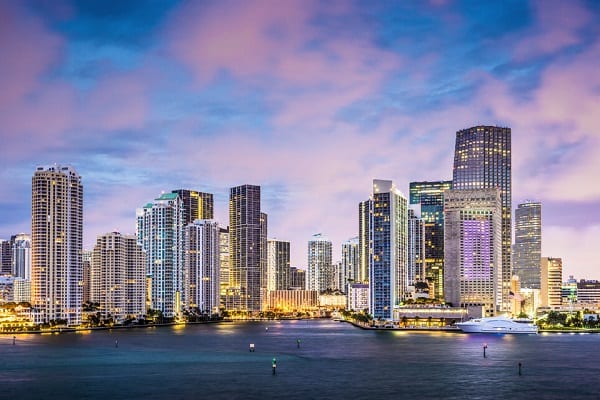
Weather
Miami’s climate is a tropical climate, hot, humid summers, and mild, dry winters. Miami enjoys an average of 3,000 hours of sunshine per year.
The city experiences cold fronts from November to March, which causes temperatures from cool to cold that do not usually stay for more than 3 or 4 days; In general, the minimum temperature does not fall below 3 ° C.
During the winter there are usually a few days with minimum freezing temperatures (less than 0 C).
Most of the rainfall occurs in summer and there is usually a dry season in winter.
The wet season is from May to September and in the dry season mild temperatures occur where weak winter precipitation takes place.
The hurricane season usually coincides with the wet season.
In addition to its elevation above sea level, its coastal location and position on the Tropic of Cancer makes the climate moderated and fresh throughout the year.
A typical summer day does not include temperatures below 35 °F or above 95 °F.
The mild temperatures are accompanied by regular humidity levels, often containing frequent afternoon storms or sea breezes that the Atlantic Ocean provides, which creates cooler temperatures.
In Miami, the highest recorded temperature was 38 ° C (100 ° F). The lowest recorded temperature was -2 ° C (27 ° F), and in only one occasion there was a light snowfall during a snowstorm on January 20, 1977 in which the snow did not stick on the ground (there was no accumulation).
Despite this data, the climatological records of Miami and its peripheral area have suffered many interruptions from 1839 to 1900.
The place where temperature and precipitation measurements is located in the city center since December 1900.
An office of the National Meteorological Service was opened in Miami during June 1911.
Due to its location between two water masses known for its important tropical activity, Miami is one of the cities that, according to statistics, is at risk of devastation by a hurricane next to Nassau, Bahamas and Havana.
Despite this, the city has not suffered directly from this phenomenon since Hurricane Cleo in 1964.
However, many other hurricanes have affected the city, including Betsy in 1965, Andrew in 1992, Irene in 1999 and Hurricanes Katrina and Wilma in 2005.
The hurricane season officially begins from June 1st through November 30th of each year.
Neighborhoods
The city of Miami is divided into thirteen distinct neighborhoods that contain their own specific features and historical places.
The heart of the city is Downtown Miami and geographically it is on the east side of the city. This area includes Brickell, Virginia Key, Watson Island and the Port of Miami.
Downtown is in the central economic district of South Florida, and it is home to many major banks, financial companies, cultural attractions, tourism and residential towers.
The south side of Miami includes Coral Way and Coconut Grove. Coral Way is a historic residential district built in the 1920s that connects the center with Coral Gables and is recognizable by its tree-lined streets and its Spanish colonial architecture and Art Deco.
Coconut Grove is a neighborhood in which the Miami City Hall is located on Dinner Key, the Coconut Grove Playhouse, the CocoWalk shopping center, and a multitude of bars, restaurants, nightclubs and bohemian shops.
It is a neighborhood with many parks and gardens such as Villa Vizcaya, The Kampong, Barnacle Historic State Park, and is home to the Coconut Grove Convention Center, many of the most prestigious private schools in the country and numerous historic homes and developments.
On the west side of the city are Little Havana, West Flagler and Flagami, as well as numerous traditional immigrant neighborhoods.
Although it was once a largely Jewish neighborhood, today it houses immigrants from Central America and Cuba in particular.
In Little Havana there is the well-known Domino park, where many middle-aged Cuban residents gather to play dominoes and celebrate activities such as Cultural Fridays or the Calle Ocho Carnaval Parade.
While the neighborhood of Allapattah, in the center of the western zone, is a multicultural mosaic of diverse nationalities coming from South and Central America.
The area of North Miami includes Midtown, a district with a great mix of ethnic diversity with a multitude of Caribbean, Hispanic, and Bohemian artists.
Within this area lies the districts of Edgewater and Wynwood, which have especially high residential towers. High-income residents typically live in the northwest, in Midtown, Miami Design District and Upper Eastside.
The northwest area of the city is notable for the communities of African-Americans and Caribbean immigrants, such as Little Haiti, Overtown and Liberty City.
In Miami, there are currently 500 churches of more than 32 different denominations. Among the most popular faiths is the Baptist with 79 churches representing the majority of the population and the Catholic Church.
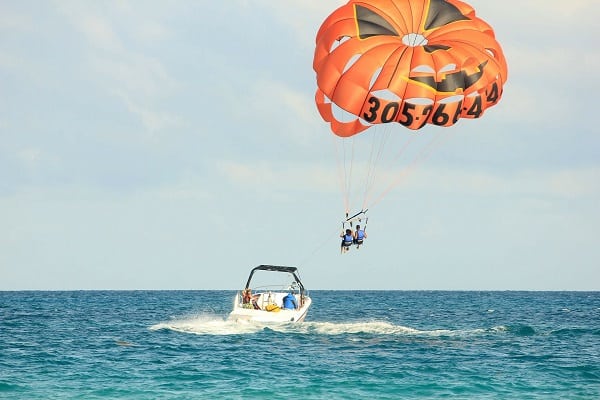
Territorial Political Division
Miami Dade County
Miami-Dade County is a county located in the southeastern state of Florida. It is the southeastern county of the continental United States.
According to a 2017 Census report, the county had a population of 2,751,796, making it the most populous county in Florida and the seventh most populous county in the United States.
It is also the third largest county in Florida in terms of land area, with 1,946 square miles (5,040 km 2).
The seat of the city council is in Miami city, the main one in the south of Florida.
Miami-Dade County is one of the three counties in South Florida that make up the metropolitan area of Miami, which had approximately 6,012,331 people in the 2015 census.
The county hosts 36 incorporated cities and many unincorporated areas.
The north, central and eastern portions of the region are heavily urbanized with many tall buildings in the coast, as well as the financial district in downtown Miami.
The southern county of Miami-Dade includes the agricultural areas of Redland and Homestead.
Redland constitutes approximately a third of the inhabited land area of Miami-Dade County and is sparsely populated, marking a sharp contrast to the densely populated northern part of Miami-Dade.
The western portion of the county extends to the Everglades National Park and is populated only by a tribal village of Miccosukee.
To the east of the continent Biscayne Bay is also Biscayne National Park and the Water Reserves of Biscayne Bay.
Miami Dade County is divided into 13 Districts and 34 Municipalities.
District breakdown of Miami
The government of the city of Miami is constituted by a system of a Mayor and five Commissioners.
The assembled Commissioners have the power to approve ordinances and establish regulations for the city.
Regular committee meetings are held at the Miami City Hall, located at 3500 Pan American Drive on Dinner Key in the Coconut Grove neighborhood.
The mayor has the power, among other things, to appoint a City Manager. In addition, the city council has a Prosecutor and a Secretary.
The five Districts are formed as follows:
District 1: Allapattah and Grapeland Heights
District 2: Brickell, Coconut Grove, Coral Way, Downtown Miami, Edgewater, Midtown Miami, Omni, Park West and Upper Eastside
District 3: Coral Way, Little Havana and The Roads
District 4: Coral Way, Flagami and West Flagler
District 5: Buena Vista, Design District, Liberty City, Little Haiti, Little River, Lummus Park, Overtown, Spring Garden and Wynwood
